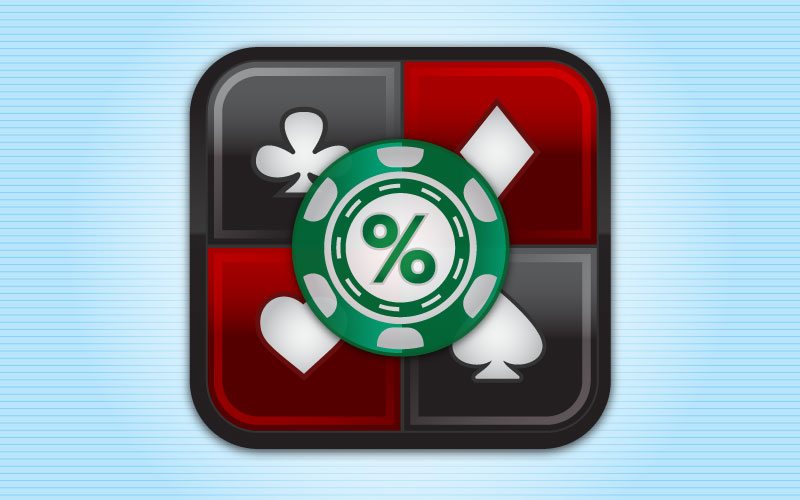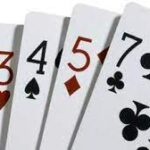Introduction
Earlier this week, I started a thread in the SSNL forum here on the FTR Forums that asked the following:
You’re getting all-in pre-flop heads-up. Would you rather get in $23 with 55 percent equity, or would you rather get in $11 with 60 percent equity?
I also listed the following answer and explanation:
If you get all-in pre-flop for $23 with 55 percent equity, then your EV is:
($23 * 0.55) + (-$23 * 0.45) = $2.30
If you get all-in pre-flop for $11 with 60 percent equity, then your EV is:
($11 * 0.60) + (-$11 * 0.40) = $2.20
We are going to use this as our base scenario for our discussion of the relationship between equity and EV.
Expected Value and Equity Defined
I have seen hands posted by players recently where they have tried to justify their play by maximizing their equity. It’s important to note that this is not necessarily the same thing as maximizing your expected value. We’re going to start by defining each of these terms and then looking at how they interact.
Expected Value Defined
Expected value is just the average amount of money you’ll win or lose on something you do. If you want to know the EV of a complicated scenario, then you add up the individual EVs of each of the possible outcome of that complicated scenario. That’s really all there is to EV. When you’re first learning poker, your goal is generally to try to maximize the EV of your decisions.
Equity Defined
Equity is what percentage of the pot you expect to win on average based on either the cards you hold or the percentage of the time you expect your opponent to fold. These ideas relate to pot equity and fold equity. The key idea here is that equity is based on a percentage and not an absolute dollar amount. This is why equity can be a particularly misleading piece of information as we’ll see in our examples.
The Relationship Between These Metrics
In the example we gave in the introduction, we found that getting in $23 with 55 percent equity had a very similar EV to getting in $11 with 60 percent equity. On the most basic level, we can see that an increase in equity did not necessarily lead to an increase in expected value. In fact, this example was constructed so that the EVs of the two options would more or less be the same.
The Role of These Factors in Value Betting
Value betting in a bet/fold scenario is one of the key topics where you can really learn in-depth about the relationship between equity and expected value. What you will learn is that with a given bet size, your expected value will scale according to the equity gap created between your equity and that of your opponent. This is difficult to wrap your head around at first, but we’ll walk through it with easy examples.
The Equity Gap
Let’s say that we’re going all-in against a single opponent for $1 on the river. If we’re only concerned with the value that we’re getting from that single bet and nothing having to do with the pot that’s already established, then we can figure out our expected value according to the equity gap, or the gap between our own equity and our opponent’s.
For example, if we have an equity of 55 percent, our opponent’s equity is 45 percent, and the equity gap is 10 percent. If we take 10 percent of $1, we’ll find our EV of $0.10 for this single value bet.
Here’s another example. If we have an equity of 65 percent, our opponent’s equity is 35 percent, and our equity gap is 30 percent. We can take 30 percent of $1 to get our EV of $0.30.
Bet Size Matters
In no-limit hold’em, we have the option to change our bet size. This will often change our opponent’s calling range which in turn changes our equity, our opponent’s equity and the equity gap. Generally speaking, the equity gap will increase as we use a smaller bet size and the equity gap will decrease as we use a larger bet size.
Let’s say that we have two options. We can bet $8 and have an equity gap of 10 percent, or we can bet $4 and have an equity gap of 20 percent. With all else being equal, these bets will both get the same amount of value because 10 percent of $8 is an EV of $0.80 and because 20 percent of $4 is an EV of $0.80 as well.
Multi-Street Play
Now where this really gets complicated and really becomes useful is on the subject of value betting across multiple streets. The bet size we choose now can drastically change our opponent’s range and the size of the future pot. Both of these factors strongly influence our ability to gain EV on future streets.
Critical Flop SPR Values
It would take a lot of work to cover multi-street value betting in this context, but I do want to look at one particularly important set of scenarios where this idea is really important and easy to apply. When you have a flop SPR of about 3.5 to 4.5, and you want to value bet, you are being put to a very critical test. The test here is that you have the option to force the money in across two streets or to ease up and bet across three streets instead.
On draw-heavy boards, people tend to want to get it in early because you don’t want to give the opponent good odds to call. On the other hand, dry boards are usually okay for you to stretch things out to three streets because it’s hard for the opponent to draw out on you. Either way, you’re trying to maximize your expected value.
Submit your review | |









